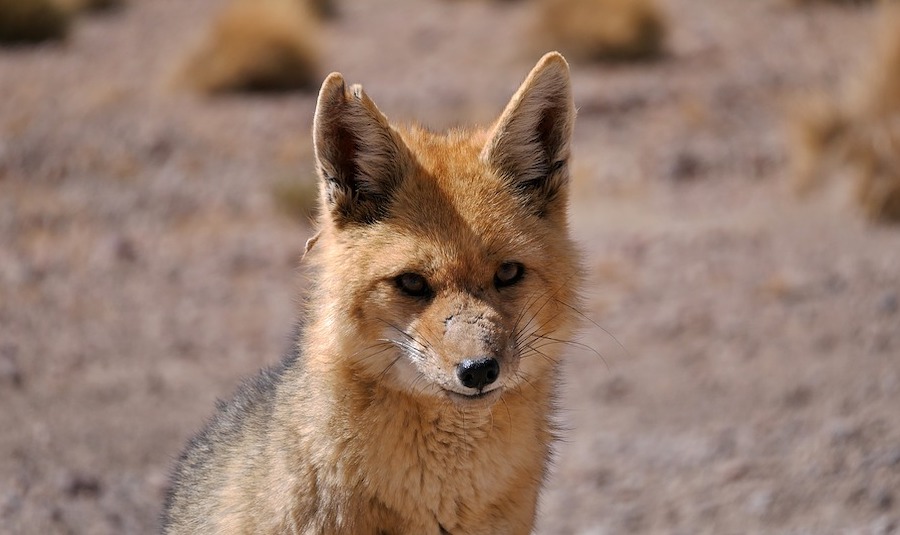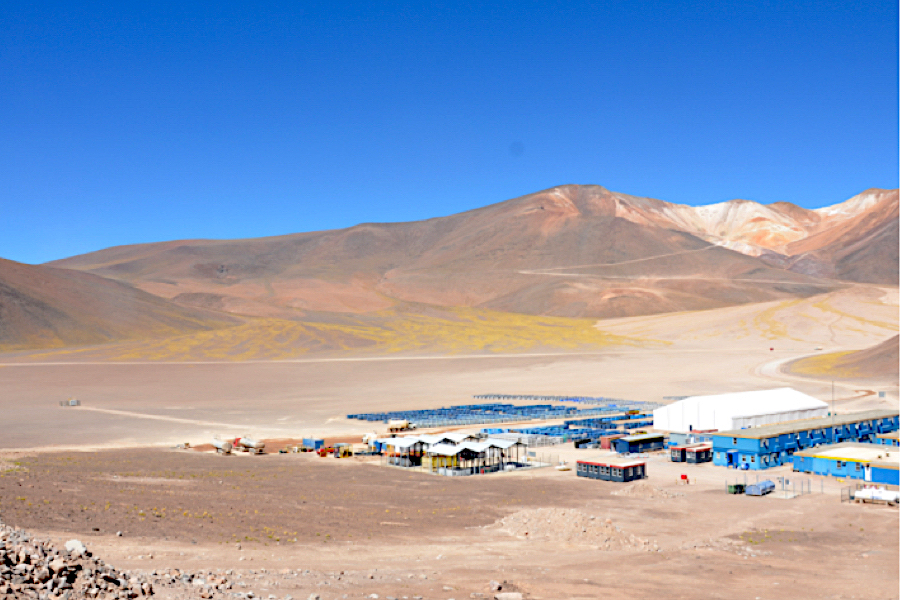Reuters | May 19, 2022

Flamingo numbers are falling, with a new study linking this to the water extracted by mining firms to pump up brine filled with lithium. (Stock Image)
On the white plains of Chile’s lithium-rich Atacama desert, bright pink flamingos enliven the sprawling salt flats where sporadic blue pools provide much needed hydration.

But flamingo numbers are falling, with a new study linking this to the water extracted by mining firms to pump up brine filled with lithium, the metal used to make batteries for mobile phones, laptop computers and electric vehicles.
Miners contend their operations do not affect flamingo herds and say the studies are based on unreliable data.
The stand-off underscores growing tensions in the Andean nation over water use and mining’s impact on local communities and the environment. Tougher regulation is a risk for firms in the world’s No. 2 lithium producer and No. 1 for copper.
“You can explain the effects specifically from lithium extraction,” said Cristina Dorador, co-author of the study in the Royal Society’s Proceedings B journal, referring to findings that flamingo numbers dropped as more water was used up.
The scientists examined salt flats throughout Chile to measure the effects of other variables on water levels. Satellite imagery of mining ponds on the Atacama, home to most of Chile’s lithium, was used to calculate how much water was extracted.
Flamingos reproduce less with less water, which over time could impact herd numbers, said co-author Nathan Senner, a researcher of ecosystems and environmental change.
“It’s not like they all die at once, but if you’re not reproducing all of a sudden, even things that live as long as flamingos start to die. And that’s where numbers really start to tumble quite rapidly.”
In other salt flats without mining, flamingo populations remained steady over the last decade despite natural water variations linked to rainfall and climate shifts. In the Atacama, though, James and Andean flamingos declined 10-12%.
Chile’s National Mining Society declined to comment. Albemarle Corp, one of the main two lithium miners in Chile, did not respond to a request for comment.
SQM, the other main lithium miner, disagreed with key parts of the study, saying in a statement that its own monitoring indicated that “flamingo populations have remained stable.”
SQM said satellite analysis could considerably over- or under-estimate water use, and called for more research on the ground.
Dorador, a scientist from the region and an elected official working on Chile’s new constitution, said locals have noticed a decline in flamingos in the salt flats affected by mining for years.
“They are incredibly important because they’re one of big tourist attractions of San Pedro de Atacama,” said Dorador.
Dorador said indigenous elders collect flamingo eggs on the flats for their regular diet, while the birds regulate the ecosystem eating plankton, crustaceans and microorganisms, helping avoid damaging bacterial blooms on the water.
Chile’s flamingo numbers overall have held up, thanks to herds on other flats not affected by mining. But the consequences could be severe as demand spikes for lithium batteries powering electric vehicles, Dorador warned.
“We have to think where these materials come from, because we’re not always aware. We buy all these things but we often don’t know what had to happen to make that product.”
(By Alexander Villegas and Cristian Rudolffi; Editing by Adam Jourdan and Richard Chang)
Foxes add to Gold Fields headaches in Chile
Cecilia Jamasmie | May 19, 2022

The Culpeo is a South American fox species. It is the second-largest native canid on the continent, after the Maned wolf. (Stock image.)
South African miner Gold Fields (JSE, NYSE: GFI), already dealing with the effects of inflation and the relocation of endangered chinchillas at its Salares Norte gold project in Chile is now facing potential sanctions from the country’s environmental regulator due to the death of specimens of culpeo fox in the area.

The Superintendency of the Environment (SMA) has ordered the company to implement a series of “urgent” and “transitory” measures after the miner reported three incidents around the project that included the death of three culpeo foxes, a species found in the Andes.
The SMA boss, Emanuel Ibarra, said its office constantly monitors the environmental impact of the Salares Norte project, located at 4,200m above sea level, in the dry Atacama region.
“Given the environmental risk tied to the [culpeo fox] species, and bearing in mind the high degree of sensitivity of the ecosystem in which the project is located, we are asking the company to fulfill the requested demands as soon as possible”, he said in a statement.
The issues the SMA is asking Gold Fields to address include submitting new reports of the three incidents informed, incorporating graphic records and studies from specialists, as well as restricting traffic speed in all the project’s interior roads to 40 km/hour.
The watchdog has also demanded Gold Fields re-define emergency reports to include the nature of the environmental impact caused, the relevance of the element impacted and the reversibility of the damage.

Salares Norte is one of five gold projects set to begin operations in Chile by 2023.
(Image courtesy of Goldfields.)
This is not the first time Gold Fields has to tip-toe around species native to the project’s area of impact. In 2020, the miner began relocating 25 chinchillas, short-tailed rodents found only in the north of Chile and which are protected by law.
The operation was going according to plan until the SMA halted it, after one chinchilla suffered a broken leg and two others died. After a series of studies the SMA requested Gold Fields to come up with with a new plan to relocate the bluish-grey furred rodents.
The company, which began construction of $860 million project last year, expects to kick off production in the first quarter of 2023.
Gold Fields will process two million tonnes of ore per year for the production of doré gold once the project is commissioned, over a 10-year mine life.
Salares Norte hosts 3.5 million ounces of gold, 39 million ounces of silver, and 695 million pounds of copper.
Beyond copper
Discovered in 2011, Salares Norte is one of five gold projects set to begin operations in the South American nation over the next two years.
Chile’s gold production peaked in 2000 at 54.1 tonnes, data from the country’s copper commission, Cochilco, shows. The nation, the no.1 copper producer and second-largest lithium producer after Australia, currently ranks 16th among the world’s top gold producing nations, according to IndexMundi.com.
Other gold projects set to come online in Chile by 2023 are Kinross Gold’s La Coipa Restart, Yamana Gold’s El Peñón expansion, Canadian Rio2’s Fenix and Australia’s Kingsgate Consolidated’s Nueva Esperanza.
This is not the first time Gold Fields has to tip-toe around species native to the project’s area of impact. In 2020, the miner began relocating 25 chinchillas, short-tailed rodents found only in the north of Chile and which are protected by law.
The operation was going according to plan until the SMA halted it, after one chinchilla suffered a broken leg and two others died. After a series of studies the SMA requested Gold Fields to come up with with a new plan to relocate the bluish-grey furred rodents.
The company, which began construction of $860 million project last year, expects to kick off production in the first quarter of 2023.
Gold Fields will process two million tonnes of ore per year for the production of doré gold once the project is commissioned, over a 10-year mine life.
Salares Norte hosts 3.5 million ounces of gold, 39 million ounces of silver, and 695 million pounds of copper.
Beyond copper
Discovered in 2011, Salares Norte is one of five gold projects set to begin operations in the South American nation over the next two years.
Chile’s gold production peaked in 2000 at 54.1 tonnes, data from the country’s copper commission, Cochilco, shows. The nation, the no.1 copper producer and second-largest lithium producer after Australia, currently ranks 16th among the world’s top gold producing nations, according to IndexMundi.com.
Other gold projects set to come online in Chile by 2023 are Kinross Gold’s La Coipa Restart, Yamana Gold’s El Peñón expansion, Canadian Rio2’s Fenix and Australia’s Kingsgate Consolidated’s Nueva Esperanza.

The Salares Norte gold project is located in the Atacama region of northern Chile.
(Image courtesy of Gold Fields Chile.)
No comments:
Post a Comment